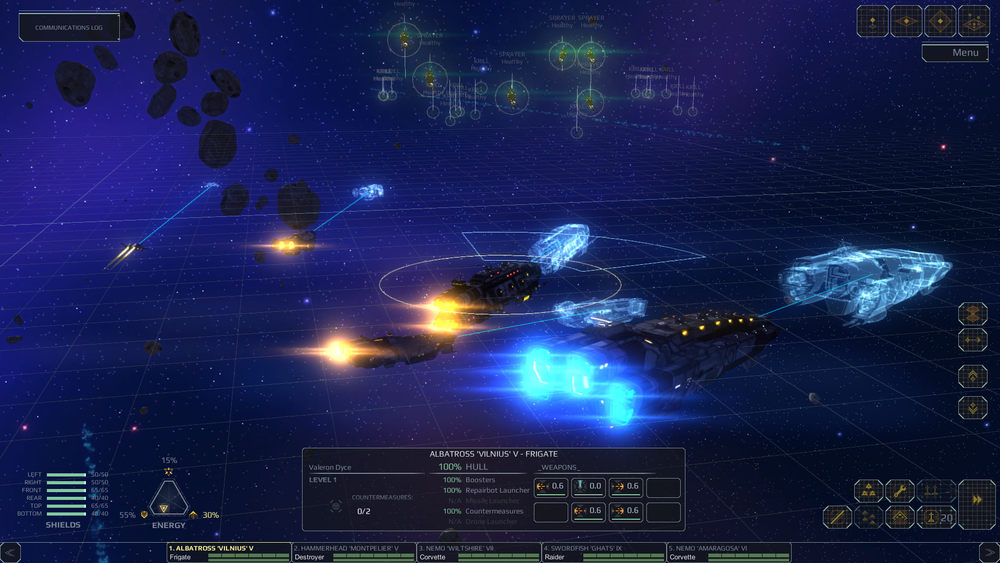Lords of Xulima is an epic cRPG.
I’m not using the word “epic” lightly here. Nor am I talking about epic story elements. I’m saying Lords of Xulima is huge, it’s challenging on many levels, and it is LONG. You will not finish this in a weekend. There are no Lords of Xulima speedruns. Much like Might and Magic, Lords of Xulima is a project, and attempting to rush it will burn you out. But wow, is it a rewarding project!

The premise is an out-of-control war is raging in the world while a parallel civil war between the gods is raging in heaven. You play a Ranger named Gaulen who’s visited in his dreams by the trickster god and tasked with gathering a party of heroes then sailing to the holy Isle of Xulima to tilt the war in heaven against the god of death. Xulima is home to a small civilization of humans whose culture is based on direct contact with the gods, as well as fantastic creatures that are the leftover results of earlier experiments by the gods before they created humanity.
Exploration
As I said, Lords of Xulima is huge. Fortunately the designers made the island a very interesting place from a gameplay perspective. Every region has a different challenge to overcome. In one area you’ll be reading riddle stones scattered through a vast plain, in another you’ll be carefully sneaking around giant stationary mushrooms that out-level you, in another you’ll be wandering around the corpses of dead soldiers trying to find your way around the sleep spells in an enchanted wood. Likewise some dungeons are monster dens to be cleared, some lack any combat and instead are filled with puzzles, and some are garrisons filled with soldiers and deadly traps. There’s always something new around the corner, and some of the puzzles were so challenging I had to take notes or draw maps on paper to figure them out.
You explore Xulima from an isometric perspective with Gaulen’s figure representing the whole party. The best comparison to Lords of Xulima’s exploration is the map portion of Heroes of Might and Magic. You’ll often find stationary groups of monsters blocking off treasure chests or alternate paths and you can mouse over them for an estimate of your chances in combat as well as showing a clearly defined zone of control to avoid. There are invisible random encounters as well with a gem that indicates how close one is to triggering. Interestingly, every map screen has a finite number of random encounters, and you get a bonus prize once you’ve cleared a map of all enemies.
Exploration has a light survival mechanic. Your food supply is measured in time and the passage of time is based on the difficulty of the terrain you’re traversing. It’s totally worth the effort to stay on the roads. One of the most challenging parts of the game is wandering through a desert looking for a giant as your rations drain alarmingly fast on the deadly terrain.
Fortunately the Ranger Gaulen has several survival skills. He can replenish food stores from berry bushes that grow back over time, he can pick herbs that can be used to permanently boost the stats of his teammates, he can hunt for meat, and so on.
Combat
One of the big weaknesses of Wizardry-style “blobber” cRPGs is the combat becoming repetitive. The fighters and healers do the same thing every fight and the only tactical decision is whether or not to have the wizards burn through their spell power or just use their pathetic bonk stick this round.
Lords of Xulima has an excellent tactical combat system that constantly has you weighing the merits of multiple options. The trick is that every attack type in the game also carries with it a corresponding status effect. Swords cause bleed that damages over time, maces cause stun which shifts enemies back in the turn order, axes cause wounds that permanently reduce stats, and spells have even more intense status effects. Not only does it make for interesting tactical choices with fighters, like which monster would be most advantageous to delay with a thump from the paladin’s mace, but enemy-inflicted status effects make even the humble cleric’s job interesting. Do you use a spell to raise your barbarian’s hit points, or do you use a spell to staunch the 40 damage per round bleeding that’s been inflicted on him by cumulative raptor attacks? I almost never sat back and auto-attacked my way through a fight in this game because it would be suicide.
Your team consists of Gaulen plus five custom heroes from nine different classes arranged on a 4×2 grid. A character can only be in the back row, out of reach of melee enemies, if there is another character in the grid in front of them, otherwise they shift to the front row automatically. This happens for enemies as well. Fighters can only target adjacent front-row enemies, so re-shuffles of your team’s formation are frequent.
But unlike an old wizardry game, the interface is simple and straightforward to use, with time compression and a generous belt of hotkeys for your favorite spells and consumables to make the process as painless as possible.
Negatives
The biggest weakness of this game is random shopkeeper selection and random container drops. This can easily lead to situations where you have a character with all his skill points invested into axes, but there are no decent two-handed axes to be found anywhere.
The music is great, but the graphics are serviceable at best, especially half the character portraits that are clearly Kickstarter donors with medieval armor painted onto them.
Gaulen himself feels like a third wheel in combat for the first 15 or so levels, sinking most of his skill points into crucial survival skills. It’s only after he unlocks Poison Strike that he starts holding his own in battle. Consider creating a front-line character with a bow, then trading for Gaulen’s starting axe when the game begins so Gaulen can shoot safely from the back row at the start, and poison snipe casters in the later game.
Finally, like I said before, this game is of an epic length and can easily burn you out if you try to rush to the end. This is a game for sipping, not chugging.
Deluxe Edition?
It’s a good question whether the deluxe edition upgrade is worth buying for this game because it has actual gameplay consequences. In the deluxe edition, Gaulen’s amulet equipment slot is permanently occupied by a living artifact and you get an extra challenge: a worldwide scavenger hunt to find floating blue orbs that charge the artifact. The artifact will tell you where to go next any time, and you can spend charge on a variety of blessings from gold to food to an extra skill point for every member of your party at full charge. On the flip side, there are some super powerful amulets available in the late-game that Gaulen will not be able to equip, putting him at a disadvantage to his party-mates, so it’s not like you’re necessarily missing out if you don’t get deluxe edition.
One of the deluxe edition guides has some valuable vital statistics on character classes and their skills to help with party-planning, but that’s info you could always get online. And one of the deluxe edition books spells out the general plot of the whole game including massive ending spoilers, so be careful!
In Conclusion
Lords of Xulima is a modern classic of cRPG design, creating a world that’s rich and vibrant with gameplay that keeps you thinking throughout its massive length. Beat this game and you truly have accomplished something great. Spanish developer Numantian games have really outdone themselves with this title. I can’t wait to see what they’re doing next!
Oh… They’re making a tower defense game… With zombies… Steampunk zombies… Oh…
Comments? Join us on the forum.
 Mischief Maker
Mischief Maker

















